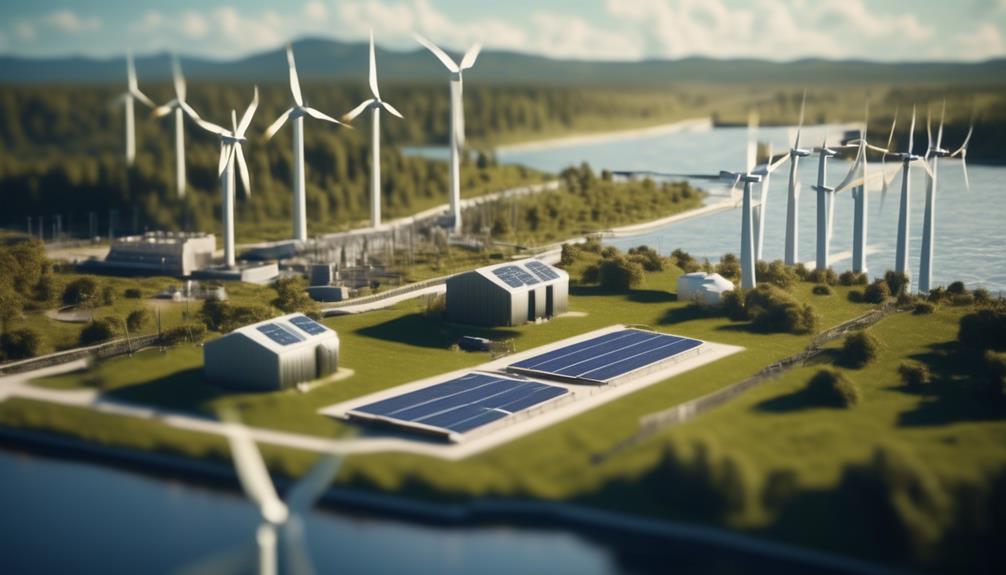In a world where energy dynamics are rapidly evolving, businesses are on a quest to navigate this complex terrain successfully. They seek strategies that not only align with their operational goals but also mitigate environmental impact and manage costs efficiently. This quest, however, is fraught with challenges, from understanding regulatory landscapes to integrating sustainable practices without sacrificing profitability.
Drawing from years of experience in the energy sector, this article delves into the intricacies of crafting energy policies tailored to a business’s unique needs and aspirations. It speaks directly to the concerns of business leaders looking for actionable insights, offering clarity and direction amidst the maze of options.
By establishing a connection rooted in understanding and trust, the following insights aim to empower businesses to make informed decisions. As we unravel the four key elements essential for developing effective business energy policies, readers will find themselves equipped with the knowledge to enhance their sustainability efforts, operational efficiency, and financial performance, encouraging them to confidently move forward in their energy journey.
Policy Objectives and Alignment
To effectively drive the company’s energy strategy and ensure coherence and effectiveness, the policy objectives must be closely aligned with the organisation’s overall vision and operations. This alignment ensures that the energy policy goals are integrated into the company’s operations and tracked across the organisation to guarantee meaningful progress.
Embracing new technologies and engaging stakeholders in the energy strategy are critical components for achieving policy objectives, especially in the realm of renewable energy development. A C-level mandate for energy strategy is essential for prioritising and implementing policy objectives effectively, ensuring that key energy policy measures are integrated into the fabric of the organisation.
Furthermore, policy design and analysis should be conducted meticulously to set achievable policy targets that contribute to energy security and create new value for the company. Government ministries play a crucial role in shaping the energy policy landscape, and collaboration with relevant authorities is imperative for the successful implementation of tailored business energy policies.
Data Collection and Analysis
In the context of aligning the energy policy objectives with the organisation’s overall vision and operations, the meticulous collection and analysis of data on energy usage patterns, production, consumption, and infrastructure are imperative for driving informed and strategic decision-making.
Data collection enables the identification of areas for efficiency improvements, while analysing energy transformation and consumption data by sector provides insights into where energy efficiency measures can be implemented.
Effective energy modelling involves validating and analysing data, formulating scenarios, and validating assumptions for accurate projections. Furthermore, energy models play a key role in policy development by assessing the impact of existing policies, reaching targets, and exploring different scenarios.
Gathering data on energy production, consumption, and infrastructure is crucial for informed decision-making, especially in the context of creating new and robust energy policies. Such data-driven approaches are essential in the development of policies that address the challenges posed by the energy sector, including climate change, and contribute to the overall sustainability and resilience of the energy system.
Stakeholder Engagement
Engaging relevant stakeholders in the energy policy development process is a critical strategic imperative for ensuring a comprehensive and inclusive approach to decision-making. Effective stakeholder engagement is essential for the successful creation and implementation of energy policies. Here are key aspects to consider:
- Identification of stakeholders: A thorough understanding of all parties with a vested interest in the energy policy, including national governments, state governments, power generation companies, and supply chain stakeholders.
- Open communication channels: Maintaining transparent and open lines of communication with stakeholders to ensure that their concerns, insights, and interests are heard and considered throughout the policy development process.
- Diverse perspectives: Actively seeking diverse perspectives and feedback from stakeholders to inform the energy policy creation, ensuring that a wide range of viewpoints is considered.
- Consensus building: Using stakeholder engagement as a means to build consensus and secure support for the energy policy, ultimately facilitating smoother implementation.
- Inclusion of feed-in tariffs: Involving stakeholders in discussions around feed-in tariffs, considering their input in the design and implementation of these mechanisms for renewable energy integration.
Implementation and Monitoring
How can the company ensure the effective implementation and monitoring of its energy strategy across all operational facets?
Successful implementation and monitoring of energy policies require a strategic approach that encompasses the entire policy cycle. It begins with assessing the economic and environmental potential of energy-saving initiatives. This involves conducting thorough research to identify opportunities for reducing energy consumption and greenhouse gas (GHG) emissions.
Once potential areas for improvement are identified, a clear implementation plan must be developed, outlining specific actions, responsible parties, and a timeline for execution. Embracing new technologies to optimise energy use plays a key role in the implementation and monitoring process.
To ensure effective monitoring, key performance indicators (KPIs) should be established to track progress and impact over a defined period of time. These KPIs may include energy consumption metrics, cost savings, and reductions in GHG emissions.
Creating a C-level mandate to prioritise energy strategy is vital for effective implementation and monitoring, as it demonstrates leadership commitment and provides the necessary resources for success.
Additionally, engaging stakeholders in the energy strategy is important for successful implementation and monitoring efforts, as their involvement fosters a culture of energy efficiency throughout the organisation.


















